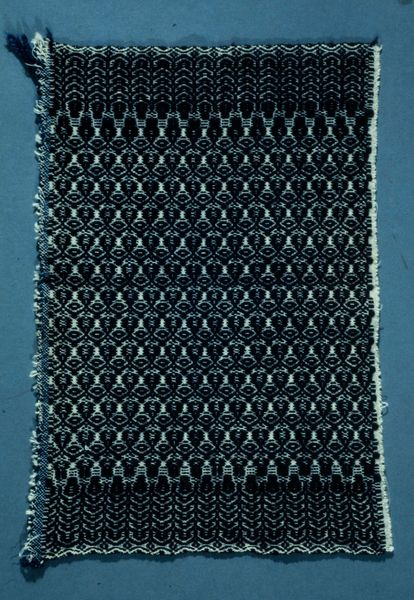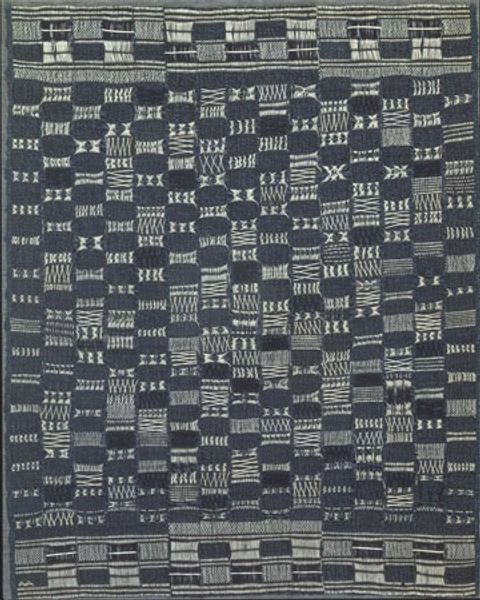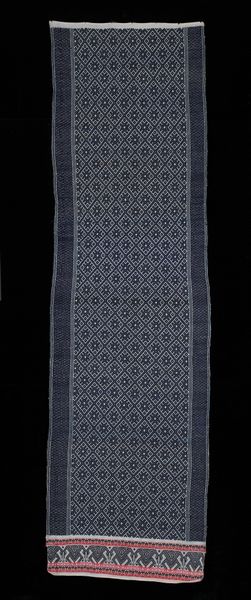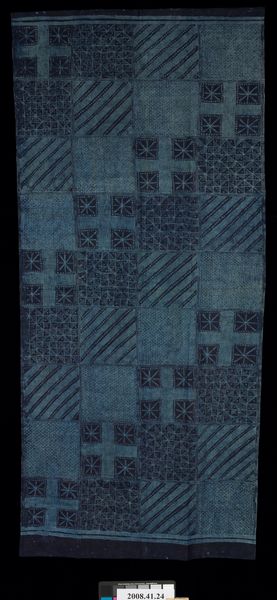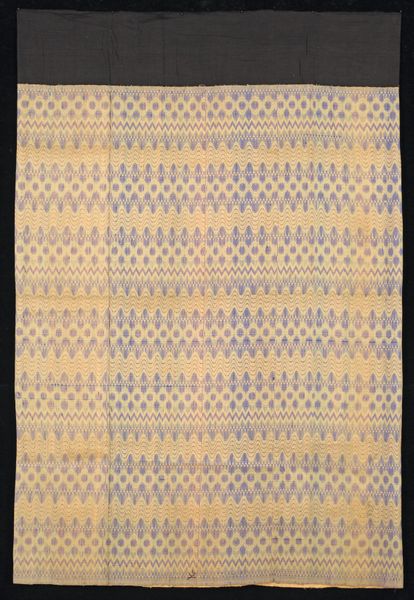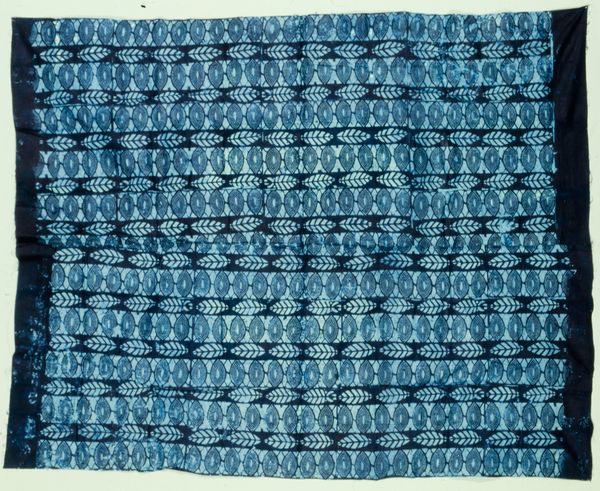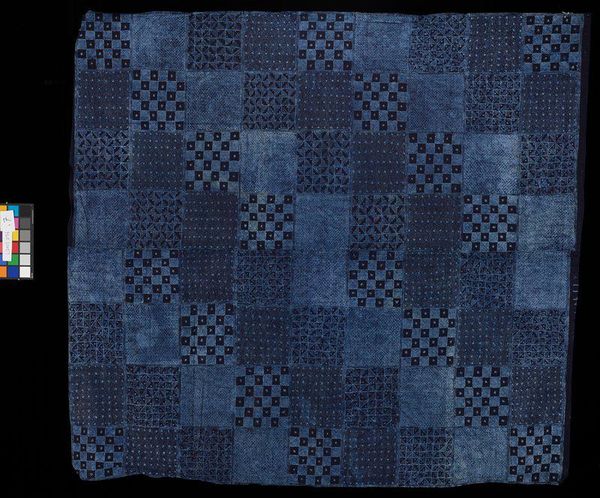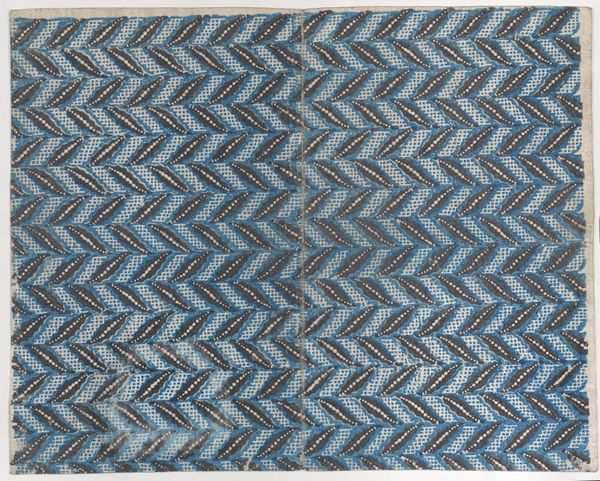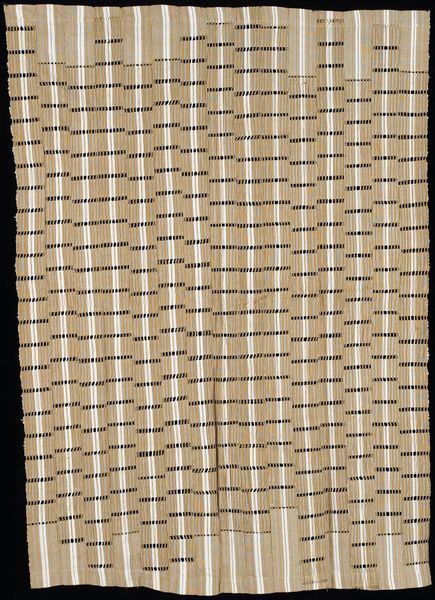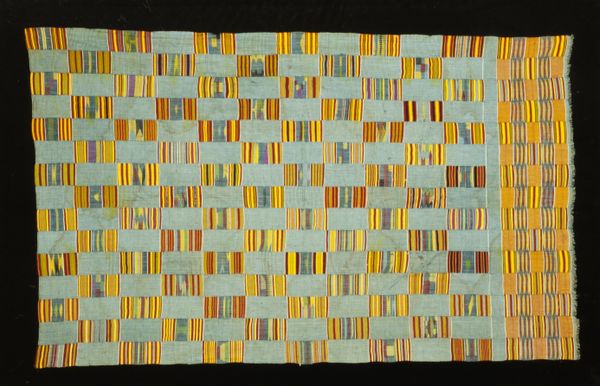
weaving, textile
#
weaving
#
textile
#
geometric pattern
#
geometric
#
united-states
Dimensions: 92 1/2 x 43 in. (234.95 x 109.22 cm)
Copyright: Public Domain
Curator: What strikes me immediately about this textile is how incredibly geometric it feels, almost mathematical in its precision. Editor: Precisely. We're looking at a coverlet fragment, believed to have been woven sometime in the 19th century here in the United States. Though we don’t know who created it, the medium is clearly textile. The geometry you note hints at the techniques used in its weaving. Curator: It gives me a sense of domesticity. The palette, a cool blue and white, feels calm, while the geometric complexity is exciting. I'm curious about its social context, the role of textiles like this in 19th century American life. Were they status symbols, functional objects, both? Editor: They were both, absolutely. Textiles of this nature played varied roles, signifying not only skill and artistry, especially for women, but also serving as crucial household items, bartered and passed down through generations. This example at the Minneapolis Institute of Art likely speaks to both utility and creative expression, reflecting cultural values around craft and resourcefulness. Curator: How did this tradition emerge, the crafting of such meticulous textiles? I assume this fragment, being housed in a museum, had an owner. Editor: The rise of textile production, specifically by women within the home, occurred parallel to shifts in the early to mid-19th century’s burgeoning textile industries. It's quite probable this came from someone's private collection—either kept or given to them by a relative, because the women who would be in textile industries couldn't own something as beautiful or intricate as this piece. These works became intertwined with societal structures and economic status. Their display and preservation tell us how these narratives intersect within our own institutional framework. Curator: So, to think about how these were functional and then became precious... That changes the way that this work makes me think about its history and its creator. The patterns aren't simply aesthetic choices. I can imagine that even these materials carry histories and meaning. Editor: Exactly. And viewing this now in the sterilized context of a museum alters its original function entirely, prompting us to examine our contemporary lens. These fragment-objects hold an enormous wealth of histories, social relationships, cultural touchstones that demand ongoing dialogue, particularly considering class and labor. Curator: This reminds us to look critically not just at what's present but what narratives might be interwoven in these threads and institutions, which inevitably alter our interpretations. Editor: Yes, this simple weaving carries a legacy as complex as any painted masterpiece, inviting constant renegotiation of its position in the cultural and political landscape.
Comments
No comments
Be the first to comment and join the conversation on the ultimate creative platform.
